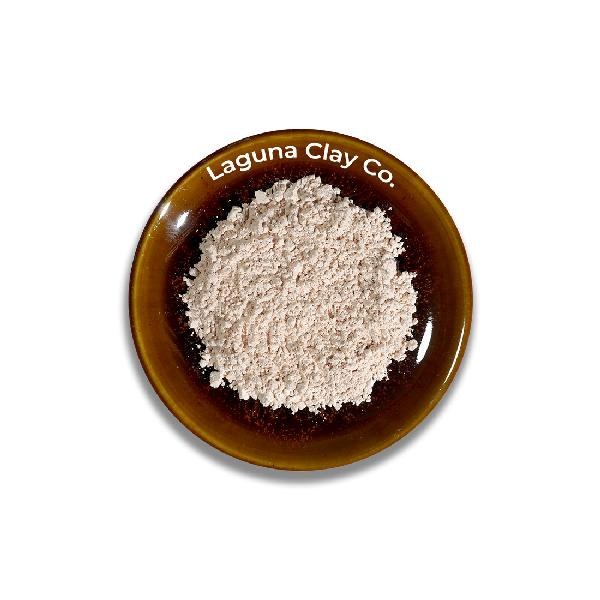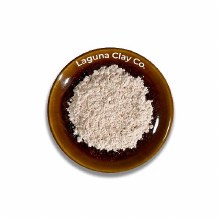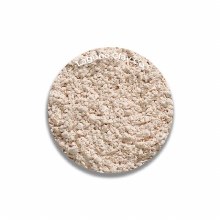Vee Gum (50# Bag)
| Qty: | Unit Price per LB: |
|---|---|
| 5 | $57.69 |
| 10 | $51.28 |
| 50 | $38.46 |
| 100 | $32.05 |
Item#: 873
MPN: MVEEGUMT
Alternate Names: Veegum T, Veegum CER, Veegum Pro, VGT
Description: Glaze Hardener, Binder
- Full bag is 50 lbs
- Macaloid-type bentonite suspension agent for glazes.
- Also a surface hardener.
- Extremely plastic hydrous magnesium silicate used to give plasticity to non-plastic whitewall and refractory bodies.
* Very similar to macaloid.
- Vee Gum is used as a suspending agent for glazes, as a plasticizing agent for nonplastic formulations such as high alumina, zirconia and porcelain bodies, and as a nonmigrating binder in extruded bodies."
Vanderbilt Minerals describes Veegum T as "Magnesium Aluminum Silicate, water-washed white-firing smectite clay, is used as a suspending agent for glazes, as a plasticizing agent for nonplastic formulations such as high alumina, zirconia and porcelain bodies, and as a nonmigrating binder in extruded bodies." They do not provide a chemistry, but usually, percentages used in recipes are very small anyway. When the term "Veegum" is used in ceramics it generally refers to Veegum T.
On this site we often refer to Veegum in a general sense, meaning that other highly refined bentonite, smectites, hectorites, attapulgites, etc. might also be suitable in your application. Veegum is the one we have most experience with. It has an unfortunately name, it is not a gum, that is, a hardening agent. It is a gelling agent.
Veegum, or VeeGum T (or VGT) is not a 'gum', rather it is a refined fine particle mineral called 'smectite' (bentonite and hectorite are members of the smectite group, smectite is CAS 12199-37-0, bentonite is CAS 1302-78-9). It is a complex colloidal and extremely plastic and sticky magnesium aluminum silicate (CAS 1327-43-1). It is an off-white insoluble flaky consistency and swells to many times its original volume when added to water. Its aqueous dispersions are thus high viscosity thixotropic gels at low solids. A potter encounters this phenomenon when employing significant percentages of VGT in glazes and porcelain bodies (e.g. more than 2%), finding that much more water is needed to produce a pourable suspension (meaning the low specific gravity suspensions can be thickened). Veegum is not subject to attack by microorganisms. Various grades are classified according to viscosity and ratio of aluminum to magnesium content.
It is important to properly hydrate the powder, mix it in water before adding other ingredients (different grades of Veegum hydrate at different rates). They emphasize not underestimating the time needed, pointing out that in 25C water it could take 120 minutes using a propeller mixer! Using hot water or a higher-energy mixer can drastically cut the time needed. If mixing does not hydrate all particles, then variations in mixing will produce variations in properties, so use the same water temperature, mixing time and energy and viscosity each time it is used to get consistent behavior in the slurry or pugged material.
In glazes, VGT is used as an invaluable in-mix suspending agent and thickener (enabling low specific gravities). This is especially important in brushing glazes where high water content is important to brushing properties. For such, a Veegum addition is a way to thicken yet still suspend a glaze slurry that would otherwise be thin-as-water (see info on Veegum CER below). Note that if, over time and brushing glaze slurry thins and settles, the likely culprit is microbial attack on the organic gum as likely in the recipe.
It can also be suitable for use as a spray-on surface hardener before decorating (mix it with water, start with 0.2% for testing).
In bodies, VGT is employed as a plasticizing agent. It is a nonmigrating binder because it is not dissolved in the water. Its key advantage is that it is clean and therefore does not affect fired whiteness. 1.5-2.0% added to a porcelain, that is otherwise a little too short for modelling or throwing, will transform it into a plastic material. Amazingly, VGT can plasticize completely nonplastic materials (such as calcined alumina, zirconia, calcium carbonate, magnesium carbonate, dolomite) at only 3-4%! White-burning porcelains are low-plasticity by nature, but VGT in higher percentages (up to 4%) can produce fantastic plasticity and workability. VGT may produce more plasticity in one body than another, depending on the type of kaolin present and the particle dynamics of the mix. For some formulations, it is difficult to produce the needed plasticity without ending up with a body that is too sticky or requires too much water.
Veegum CER is described as a mixture of VEEGUM T and medium viscosity sodium carboxymethylcellulose (CMC gum) that serves as a hardener, suspending agent and viscosity stabilizer in glazes. A maximum viscosity suspension can be made using about 45 grams per litre of water (you will need a good propeller mixer and hot water to do this, the gelled solution is easier to scoop out with a spoon, it is much less stringy than CMC Gum solution). A Veegum CER solution can be added to an already-mixed dipping glaze to impart the above properties, although it lowers the specific gravity it also gels the slurry. If enough is added more water will also be needed, in this way slurries of low specific gravity can be made (e.g. for brushing glazes). You may need to make Veegum CER solutions in smaller quantities or add a biocide (bacterial growth is possible).
Veegum Pro is Veegum T treated with an amine to improve dispersibility. It is recommended for use where a minimum amount of water is required and/or only low-shear mixers are available.
Other grades (like F, HV, K, R, HS) are used in non-ceramic applications (like pharmaceuticals and personal care products).
The manufacturer does not supply a chemical analysis. Since it is used in such small amounts this is not really an issue. If needed just use the bentonite chemistry (it is possible in INSIGHT to label a recipe line as Veegum yet specify bentonite as the material database lookup value).
Density (Mg/m3): 2.6
Viscosity (after shear mixing, 5% dispersion): 250 cps +/- 25%
Moisture: 8% max
pH: 8.5




Share:
Share on Facebook Share on Twitter Share on Pinterest Tell a friend